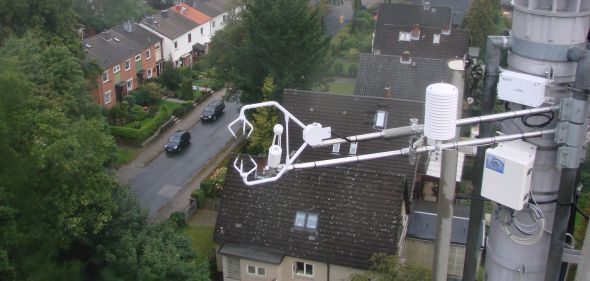HUSCO

Photo: Sarah Wiesner, IfB, UHH
Project description
Soil as a storage and transmitter for water and thermal energy can impact and modify the local climate. The project HUSCO pursues the goal of gaining a more precise understanding of the interaction between soil and atmosphere in the urban area and to experimentally quantify the heterogeneity of the urban climate – using the example of the Free and Hanseatic City of Hamburg. A focal point in this topic area, which can be optimally investigated in Hamburg in particular, is the influence of the groundwater flood distance. Therefore, the exemplary investigation of the climate function of soils takes place on the basis of the influence of different soil water balances within different typical urban structural units. The results of this projects should enable more concrete predictions of the effects of climate change in urban areas and the derivation of options for adapting to climate change through urban planning measures.
Long-term measurements began in early summer 2010 in three districts of Hamburg and were supplemented four years later by three additional measurement sites. When selecting the location, the aim was to specifically record certain processes and effects in the extremely heterogeneous urban space. The role of the groundwater floor distance is taken into account by focusing on "dry" (high groundwater floor distance > 5 m) and "wet" urban districts (low groundwater floor distance < 2.5 m) with residential and green space use, as well as sealed inner-city areas.
In order to determine the local climatic effects of urban land use, ten MeteoStations are operated, which record the most important atmospheric parameters. 18 soil stations record the seasonal changes in soil water and soil heat balance at the locations of the MeteoStations and in the immediate vicinity. Sensors were installed at the sites at up to five depths, which can provide information on the temporal and spatial heterogeneity of the soil water balance. In order to be able to quantify climate-controlling processes such as fluxes of energy and water on a larger scale, two eddy covariance systems are operated. In addition, the measurement data from the weather mast in Hamburg are evaluated in order to assess the superordinate meteorological conditions.
Publications
- Wiesner, S., 2013. Observing the impact of soils on local urban climate. Dissertation Universität Hamburg. Hamburger Bodenkundliche Arbeiten 69, 175 pp.
Cooperation partners
- Behörde für Stadtentwicklung und Umwelt Hamburg (Abt. Vorsorgender Bodenschutz)
- Tierpark Hagenbeck Gemeinnützige Gesellschaft mbH
- Deutsche Telekom Netzproduktion GmbH
- Deutsche Funkturm GmbH
- HafenCity GmbH
- Bezirksamt Hamburg-Mitte / Bezirksamt Hamburg-Nord
- Zollamt Oberelbe
- Isuf e.V., Bauspielplatz Tweeltenmoor, Hamburg
- Albrecht Thaer Gymnasium HH-Stellingen
- Nelson-Mandela-Schule HH-Kirchdorf
Employees at the Institute of Soil Science
- Engineer: Volker Kleinschmidt
- Doctoral candidate: Sarah Wiesner (completed, Hamburger Bodenkundliche Arbeiten 69)
- Ingo Lange (Meteorological Institute)
- Duration: 10.2009 - 2017
- Project lead: Prof. Dr. Annette Eschenbach, Prof. Dr. Felix Ament
- Sponsor: DFG (as part of the cluster of excellence CliSAP), Free and Hanseatic City of Hamburg (Climate protection program)
